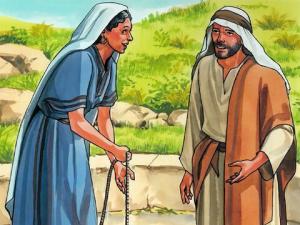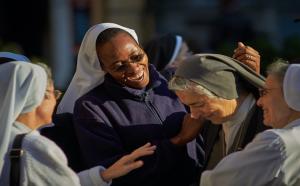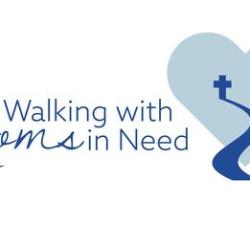Women in the Catholic Church have enjoyed a more equal position with men than in other religions. Hysterical bigots, however, like to post on social media that the Catholic Church has “enslaved” women for 2,000 years. Time for a history lesson!
Jesus Elevated Women
Jesus was the closest thing to an equal opportunity employer one could find in His culture. Scholars agree that there are more references to women in Gospel stories than in other literature of the time
It is also noted that Jesus never disparaged women but often affirmed them. In fact, Jesus is the only founder of a religion or sect who did not discriminate against women. That fact, by itself, ought to be a convincing talking point of Christian evangelists.
We know that women were always among Jesus’ disciples and in the crowds that followed Him. The Gospels tell us that He talked with women and recognized their presence even though Jewish women were supposed to be silent and unseen.
Further, Jesus used women as models of faith in His parables—consider the widow’s mite, the ten virgins, and others. He also granted miracles to several women and forgiveness to women condemned by His society.
As Jesus carried His cross, it was a woman, Veronica, who wiped His face. The only people He talked to on the way to Calvary were his mother and then a group of women.
Standing at Christ’s cross were just young John and three women. After He had risen, Jesus made His first appearance to women.

Sweet Publishing / FreeBibleimages.org.
All told, Christ’s interaction with women was unprecedented, even revolutionary behavior. There is no doubt that He elevated the status of women above that of a culture that limited women’s roles severely.
The Church Included Women
Christ’s example made an imprint on the Church. Even Paul addressed many of his letters to “my brothers and sisters” indicating inclusion and his recognition that women were worthy of being instructed in the faith.
Paul also used women as examples of holiness. He wrote to Timothy: “I am reminded of your sincere faith, a faith that dwelt first in your grandmother Lois and your mother Eunice.” (2 Timothy 1:5)
Compare these inclusions to other religions where women are not allowed into the temple, or permitted to sit in the main sanctuary, or even given religious training.
Although cultural restrictions have inhibited women’s roles in the Catholic hierarchy through the centuries, their strength and sanctity have always been heralded by the Church.
For example, in the Eucharistic prayer of the Mass, there is a list of early martyrs—8 men and 7 women (Felicity, Perpetua, Agatha, Lucy, Agnes, Cecilia, Anastasia). That’s close to equal!
The Church Honored Women
Women have always been recognized as saints in the Church, and Catholics are encouraged to pray to them just as they do to male saints. After all, the greatest saint, the most revered person in the Church after Jesus, is a woman—Mary!
There have also been women designated as “Doctor” of the Church for their remarkable theological scholarship: St. Teresa of Avila, St. Catherine of Siena. St. Therese of Lisieux and St. Hildegard of Bingen.
Although these are only four of the 37 Doctors, and none were named until 1970, new scholarship will surely produce other nominations. However, lack of opportunities for education and publication through the centuries may still limit the numbers.
The point is, though, that the Church does not find women unworthy of its highest honors and is open to learning from them and accepting them in roles not even considered in other religions.

The Church Liberated Women
Another unique promotion of women among Catholics is that of religious life. Despite society’s emphasis on marriage and motherhood as the sole roles of women, the Church provided another avenue.
In convents, women were allowed education, occupations, and life virtually without male dominance. Nuns took on leadership and administrative positions and founded schools and hospitals.
In the United States: “The single largest non-public system of education in this country simply would not exist without generations of resourceful women exercising extraordinary, resourceful power, long before women around the world had much of it.” https://www.partnershipnyc.org/catholic-womens-history/
A significant percentage of hospitals in the United States are Catholic. Most are run by religious orders of women. You could find nuns with bachelor’s and graduate degrees long before it was common for other women.
I absorbed feminism from the good sisters as I grew up. If they didn’t need men to function, if they could be scholars and pursue careers, then all women could do such things.
Admittedly, despite the continuing increase in women’s roles in the Church, Catholic women still have a long way to go to achieving an equal voice. Fortunately though, they have a well-respected history to build on.












